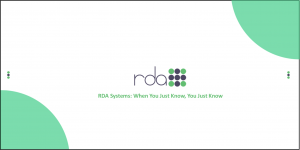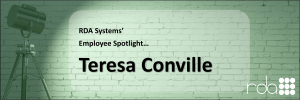Sarah was the superintendent of a small school district.
Although the town of Willowbrook was nestled between rolling hills, the challenges facing its school district were mountainous. Limited resources strained every decision, but Sarah knew that they needed to provide a high-quality education for all.
One morning, as Sarah was sipping her coffee and looking through one of many reports, a particular piece of data caught her eye: a dip in attendance rates over the past half a year. But as she dug in deeper using her business intelligence (BI) tool that her district had implemented; she noticed a particular demographic that wasn’t attending school regularly.
With the help of her staff, they conducted a series of targeted interventions, from tailoring their teaching methods to engaging with this demographic more often. Within a matter of weeks, the attendance rates began to rise and, more importantly, the students were showing a newfound enthusiasm for learning.
Just like that, a single bit of data was a catalyst for positive change. It goes to show just how BI can empower administrators and educators alike.
In times of limited resources and tight budgets, a commitment to providing high quality education can be bolstered by business intelligence software. BI can uncover opportunities for improvements – from budget optimization to strategic planning to enhanced safety – helping shape the future of small school districts.
#1. Managing and Reducing Operational Costs
Small school districts almost always have the challenge of budgetary constraints. The population is smaller and, thus, things just don’t scale the same way due to a smaller population of students.
From staffing and technology to facilities and more, managing budgets requires precision. That’s especially true if costs need to be reduced; administrators need to cut away the excess without harming anything that’s essential.
Where can you draw that line? Business intelligence can help.
For example, a small school district might determine that they need to cut costs on some of the extracurricular activities that aren’t engaging kids as much in order to pour more money into the gifted program that yields a dozen Ivy league students annually.
Why? Well, looking at the data through the business intelligence dashboard, the administration may determine that the gifted program is generating the most significant impact at their small school district. Some families move to the town just for it and teachers are more likely to accept offers by the district due to these credentials.
Meanwhile, the same dashboard has shown them that three extra-curricular activities have been attended by fewer than a dozen students for the past three years.
Funneling funds away from these activities will allow the school district to yield even better results for the district as a whole – especially in terms of student performance, engagement, and satisfaction. And that’s what running a successful district is all about.
#2. Planning Strategically and Aligning on Goals
A lot of the day-to-day of the administrators of a school district revolves around details. But stepping away and making sure you’ve got the big picture down is essential too.
Business intelligence software offers that possibility.
From its dashboards and reports, to graphs and charts, staff can stop guessing, and start planning strategically.
For instance, schools can create tailored educational paths for different student groups, recognizing that each child has a unique potential and needs. They can pin-point data and insights as to how each of the groups behave.
Whereas the elementary school kids do well with an 8AM start, perhaps the BI ascertains that the high school kids seem to struggle with it, resulting in more truancies registered in the first two periods than any other time. Recognizing this and allowing high school pupils to have a later start could yield better performance results for your district’s young adults.
And once strategic plans are implemented, business intelligence tools can also help monitor those tools and adjust the goals too. Small districts need to pivot fast to avoid wasting too many results and ensure that the district’s overall objectives remain on target.
An additional benefit of business intelligence in a small school district setting is that different departments and staff can also align their goals to work together, rather than in separate silos. Working in isolation is something that no school district, especially a small one, can afford to do.
BI insights let staff synchronize their efforts, from academics to extracurricular activities. The first step is training the staff in utilizing the BI tool that the district is using and giving them time to actually use it.
For example, data might show that physics is the subject in which performance throughout the district is the worst. This might lead to teacher performance reviews, or perhaps an introduction of extracurricular activities (such as robotics) to give physics a district-wide boost.
#3. Enhancing Safety and Security
Another great use of business intelligence in a small school district environment is in enhancing its safety and security. You might think of physical safety measures, such as emergency preparedness, but it’s also digital security and compliance that carry a lot of weight nowadays.
Let’s start with the more straightforward physical safety measures that BI data can help schools with. BI software can assist administrators in preparing for all kinds of eventualities, whether it’s natural disasters, health emergencies, or other unforeseen challenges. The tools do so by analyzing data from the past and predicting future outcomes of similar situations.
There is also digital security and compliance. In a world where digital interaction is increasingly prevalent and personal data must be safeguarded, BI tools ensure compliance with various laws and regulations. Think of it as a state-of-the-art tool that protects what’s sensitive, yet still creates an environment that’s friendly and conductive to learning.
For instance, BI tools can help by identifying any content that might be harmful to students of a particular age group, thus guiding pupils to navigate the digital world safely and responsibly.
Achieving Success with BI as a Small School District
Business intelligence in small schools is an unmatched tool; it allows the administrators and the teaching staff to understand everything from the big picture to the minute detail of what makes their school district tick. And once they’ve understood it, it allows them to make adjustments or changes to make it tick even better.
From aligning on goals and being strategic about their planning, to optimizing the operational costs, the opportunities for BI are boundless.
The process combines data and insights, technology and people, current realities, and future plans. And every detail in this process contributes to the success of your small school district. Just as Sarah was able to find a single piece of data that became the catalyst for change and lasting impact, what will you do with the power of BI to impact the lives of the students in your school district?
Discover how RDA Systems can help your organization leverage the power of BI software.
Discover how the power of data can transform your small school district.





